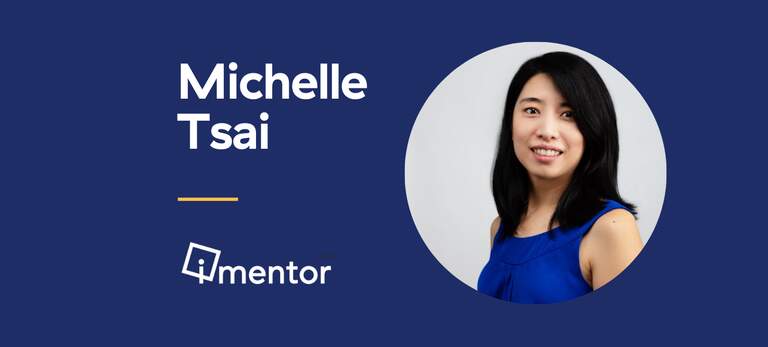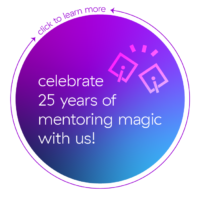iMentor continuously works to amplify the voices and experiences of people of color. For Asian American and Pacific Islander Heritage Month, we are highlighting some of the leadership stories of AAPI staff as they describe what motivates them to invest in iMentor students and pursue education equity work.
Michelle Tsai is iMentor’s director of marketing and communications. When we spoke to Michelle, she shared how her perspective on education has been shaped by her experience immigrating to the U.S. and her connection with teachers throughout her early years in school.
What first inspired you to get involved in education equity work and build a career in non-profits?
My family immigrated to the US from Taiwan when I was seven, and we lived in the Kingsbridge section of the Bronx, NY. Higher education was something my parents aspired to for me and my siblings, and they expected us to get college degrees from American universities. That’s why they moved our family to America.
But how to achieve that? Less clear. My mother was orphaned at a young age and had little formal schooling; she started working full time as a teenager to support herself. My father obtained a master’s in engineering at Manhattan College, but could not get a job with those skills due to language and cultural barriers; he ended up working as a salesman. My parents instilled in me a belief in meritocracy and hard work, and for many years that seemed sufficient. In truth, so much about the path to and through college remained opaque.
Many teachers connected me with opportunities. My 5th grade teacher, Mrs. McHugh, suggested I apply to a program called Prep for Prep that helped students of color attend private schools. In Prep for Prep we discussed race and equity and identity, and learned about internships and networks and the college application process. I eventually left private school for a specialized high school, where I benefited from teachers who were invested in my growth and success. When I was applying to college, I discovered that my undocumented status made me ineligible for any Pell grants; this was years before DACA and the Dream Act, however, and my lack of status filled me with embarrassment, anger, and a lot of despair. Because of everything that went right for me, however, I received a financial aid package from a college that made attending possible.
I was lucky to have had so many people who looked out for me. With their support, I was able to have so many chances to learn, to explore, to try, to do my best. Every young person deserves the same, and that is what drives me in this work for greater educational equity for students of color.
Was there a distinct moment when the importance of representation in the education system was reaffirmed for you?
As a student, I never had an Asian American teacher in a subject that was not an Asian language or culture. We still have a long way to go for Asian American representation. There are relatively few Asian American teachers, principals, and administrators in schools and colleges. In New York City public schools, 7 percent of teachers are Asian, compared to 18 percent of students.
At the same time, I am heartened to see my son growing up in a vibrant, diverse school community filled with students, teachers, and staff who are of different ethnicities and races, of neurodiverse and LGBT individuals.
From your experience in student-facing work, what are some ways people can better support AAPI students and help them gain access to more early career opportunities?
Racism abounds, and I call on people to advocate on behalf of AAPI students. Speak out against anti-Asian hate. Call out racism when someone makes fun of an accent, says a name is too hard to pronounce, or deems an unfamiliar food stinky. Reject the exotification and objectification of Asian American women and the emasculation of Asian American men. Actively reach out to cultivate mutual allyship between AAPI students and other students of color. Ensure that support for AAPI students is baked into systems and infrastructures, rather than putting the onus on students themselves to right wrongs. Fight the manufactured invisibility of Asian Americans; learn about prominent Asian Americans. Learn about Asian American history and demand that the AAPI community be reflected in school curricula so that AAPI people are not erased from our history. So that everyone knows that Asian American history is American history.
What advice do you have for students in this program who want to build their leadership skills?
Go for it! There are opportunities everywhere, and if you don’t see what you’re looking for, go out and create your own path. It’s no use trying to do what other people do; you need to tap into what you see in your community, what propels you forward and what ignites your passion. Remember that your work will be anchored by your relationships with others, so nurture your personal connections and listen when others speak. Your mentor and the people around you want to support you, so don’t hesitate to involve them. If something doesn’t work out like you expected, that’s fine – setbacks and pivots are a normal part of the process. It takes guts, but the world needs more young people to take the lead.

